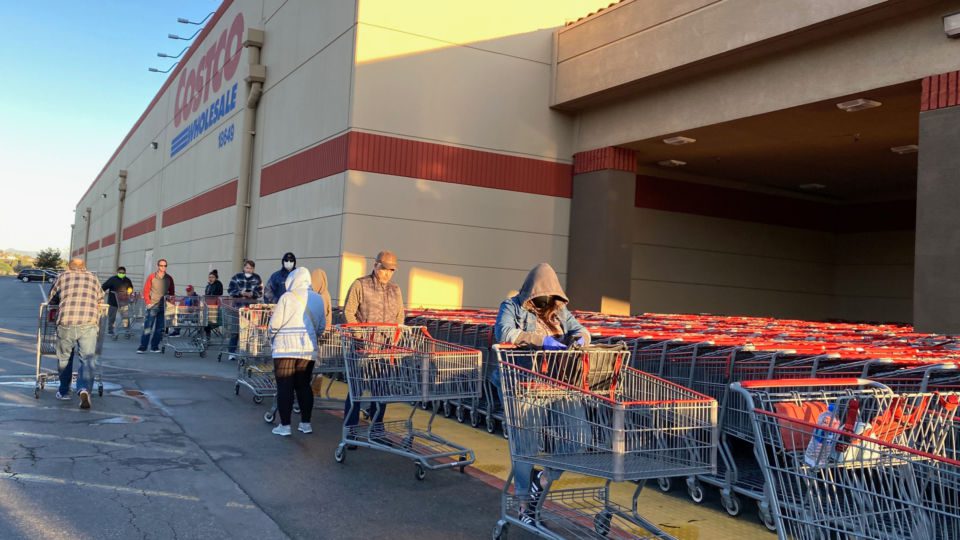While the COVID-19 pandemic may feel never-ending, it won’t last forever — and brick-and-mortar retailers need to prepare themselves to get back on their feet in a safe, efficient manner. The return to normalcy may be slow, and the retail landscape will be forever changed in some ways, but the lessons learned during the difficult months of social distancing will help retailers adapt and succeed.
“As a retailer, what I would ask is, ‘What has COVID-19 made clear to me?’” said Dipita Chakraborty, Client Partner at the CPG Practice of Fractal Analytics in an interview with Retail TouchPoints “What we’ve learned from COVID-19 here is shopper priorities in terms of products and categories. This almost gives a new start to retailers, and I would tell them to not go back to the previous normal. This is a great opportunity to reinvent your stores.”
Even though actual reopening dates remain uncertain, it’s not too early for retailers to formulate their reopening plans. The actual process will be gradual, with less impacted regions lifting social distancing precautions ahead of COVID-19 hotspots, but every retailer should keep the following in mind as they prepare:
- The lingering impact of social distancing: Shoppers will still be wary of close quarters in the weeks and months following the pandemic, so keep contactless options alive and make stores as open and welcoming as possible;
- The taste for omnichannel may not fade: Many shoppers ordered groceries online or chose curbside pickup for the first time during the pandemic, and this will cause a permanent shift in habits for some — so be ready to operate in the new omnichannel normal; and
- A recession could cause additional changes: A substantial share of shoppers will have been unemployed for weeks or months, which will impact their buying power. Retailers must also prepare for the possibility that COVID-19 will trigger a recession that outlasts social distancing.
Shoppers Will Be Nervous, So Stores Must Be Welcoming And Efficient
When brick-and-mortar stores do reopen, people will have spent months away from public places and crowds in general, so they will still be taking precautions until they are certain the coronavirus threat has passed. With this in mind, retailers should strive to create a warm, open atmosphere that welcomes customers back and demonstrates that retailer understands their concerns.
“Make sure you are asking yourself questions about what normal consumers are going to want or see,” said Tracy Thie, Principal and Co-Founder of Powerplay Retail. “Use your own personal habits and situations to drive these decisions. Cluster-free shopping with clear sightlines will make most shoppers feel better about the surroundings. How a retailer looks is important to how it feels to shop. Don’t take for granted they will come back — they want to come back, but you need to earn it!”
Thie laid out several steps for retailers’ reopening roadmap:
- Think about how the floor looks and feels, and start making changes now;
- De-clutter the store — open spaces will be essential in drawing shoppers back;
- Determine how you plan to follow any new local guidelines required to reopen;
- Remain flexible and determined to win back your customers, even if they don’t immediately rush back; and
- Train associates to ask about and watch for any changes in customer behavior in the early stages of reopening, and don’t be afraid to make rapid changes based on what they learn.
More hands-on retailers, such as apparel merchants, will face an even bigger challenge. Fitting rooms may be viewed with suspicion in the near-term aftermath of the pandemic, and shoppers may still try to keep their distance from associates.
“Retailers must have some sort of a push towards a contactless kind of atmosphere, because consumers will still be worried about touching things, handling things and even getting measured,” said Ronen Luzon, Founder of MySizeID. “Think about Victoria’s Secret stores, where women walk in and in many cases they get measured for a bra, or Men’s Wearhouse stores, where men get measured for a suit. This will be an issue, at least in the first couple of months.”
The key to overcoming this challenge will be understanding your shoppers better than ever before, according to Luzon. Apparel retailers in particular can let shoppers announce their visits beforehand, giving associates an opportunity to set aside the right items in order to minimize the need for close interaction, or use of shared spaces, when the customer arrives. All retailers can benefit from similar practices by using wish lists and prior shopping carts to help customers speed up the in-store journey.
Omnichannel Exposure Will Speed Up Adoption Across Age Groups
Social distancing and shelter-in-place directives have accelerated a shift toward e-Commerce shopping, and retailers already feel the difference: Best Buy recently reported a 250% increase in e-Commerce sales, while Amazon is hiring 175,000 new workers to keep up with the demand. This massive change isn’t going to be permanent, but neither will it go way entirely — omnichannel expectations already were rising steadily, and COVID-19 will likely give them a sudden boost.
“Take a look at Nordstrom and many other retailers: the footprint of a store has gotten smaller, they’re showing you some items, but a lot of product isn’t on display,” said Jay Hakami, CEO of SKYPAD. “You can purchase by working with a store employee through a digital medium. The combination of commerce and physical stores has to be seamless — now more than ever, consumers expect to be able to shop in the store, return to the store, shop online, return online and any combination thereof.”
One of the drivers of demand for in-store digital tools will be the democratization of technology caused by COVID-19. Every retailer knows younger shoppers love mobile tools — Gen Z shoppers access their apps 60% more often than all older demographics combined — but their love of convenience may spread as older shoppers start using these tools out of necessity.
“What COVID-19 has done for consumers is trained everyone on online tools,” said Luzon. “Even my mom, who is 85 years old, understands what Zoom is now. COVID-19 has made everyone aware that online tools are here, and they are here to stay. Online market share will increase dramatically. People will get more familiar with online tools — they will look for them, they will search with them, they will build profiles with them.”
The End Of COVID-19 May Not Be A Return To Normal
While retailers can plan for their reopening, they can’t predict every challenge they will face. One concern is the threat of a recession triggered by COVID-19. This may not just delay retail’s recovery —it could alter the landscape beyond even what social distancing has done.
“I would take into account the potential impact of a recession when reopening,” said Fractal Analytics’ Chakraborty. “Retailers really need to weigh what stores should have in stock based on the local economy they’re operating in. Recessions never are equal from one geography to another. Take that into account as you start stocking up — what will consumers be looking for in goods and services?”
Thankfully, retailers won’t be flying into this storm blindly: many of the lessons that guided them through 2008 will still apply today. For instance, Chakraborty expects a recession to drive increased interest in private label products. Companies should start thinking about the potential implications now, both in terms of regional and nationwide impacts, and start adjusting their store and supply chain operations proactively.
While COVID-19 may put a new emphasis on digital transactions, and the return to brick-and-mortar is unlikely to be immediate, but physical stores will still account for the lion’s share of sales — and the pandemic won’t change that.
“Humans are built to interact,” said Hakami. “There’s so much we can do over the web and through technology, but I think people will come out to shop in the stores. You know, 84% of purchases and retail still goes through brick-and-mortar stores. People will go out in those places that open up first, and then the ones later on. Is it going to be in droves? I think it’s gonna be slow, I think people are going to be hesitant initially, but as time moves on traffic will definitely increase at physical stores.”













